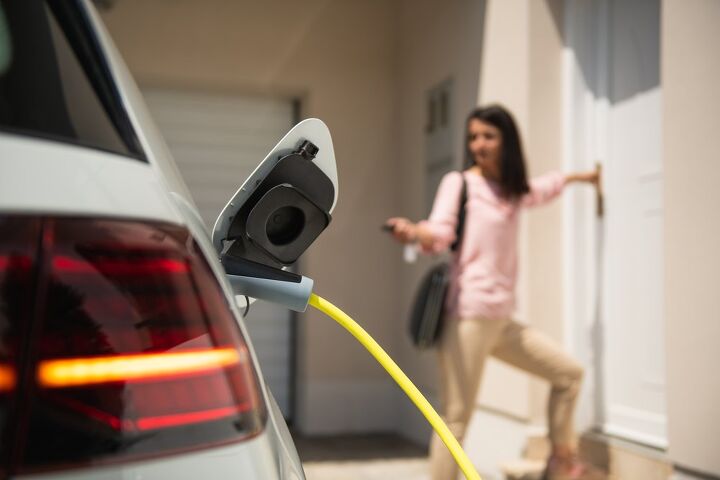Why More Americans Are Considering Electric Cars Now Than Ever Before
Recent data collected over a three-year period ending in February 2024 shows a significant increase in consumer searches for electric vehicles (EVs). Analysis indicates that interest in EVs has more than doubled, with a 177 percent rise in searches, underscoring a shift in consumer behavior and a greater inclination towards purchasing electric vehicles.
Influence of Fuel Prices on EV Demand
A distinct spike in searches for electric vehicles was noted between February and March 2022. This period coincides with increases in gasoline prices, suggesting a possible link between rising fuel costs and heightened interest in electric vehicles. Such trends highlight how external economic factors can drive consumer interest towards more sustainable vehicle options.
Popular Electric Vehicle Models and Pricing Trends
CarMax's sales data from September 2023 through February 2024 identifies the electric vehicles that are currently leading in popularity, along with their average sales prices:
- Tesla Model 3: $34,045
- Tesla Model Y: $43,896
- Nissan LEAF: $18,465
- Volkswagen ID.4: $31,576
- Ford Mustang Mach-E: $38,713
- Audi e-tron: $41,205
- Chevrolet Bolt EUV: $26,776
- Chevrolet Bolt EV: $22,564
- Tesla Model S: $45,574
- Hyundai Ioniq 5: $37,036
The pricing data reveals a range from approximately $22,000 to $45,000, which is significantly lower than the previous high of $72,000, suggesting that electric vehicles are becoming more financially accessible to a broader range of consumers.
Regional Sales Insights
While California remains a stronghold for electric vehicle sales, there is notable growth in the East Coast markets, particularly in Massachusetts, New York, and Maryland. This geographical expansion of EV sales indicates a nationwide shift towards electric mobility.
Public Sentiment and Market Response
Aligning with CarMax's findings, a 2023 Pew Research study revealed that a substantial portion of Americans are considering electric vehicles for their next purchase. This is reflective of a broader change in consumer preferences and a growing acceptance of electric vehicles across the country.
The collected data from CarMax not only emphasizes the diversity in popular electric vehicle models but also illustrates a trend towards more advantageous pricing. As the electric vehicle market continues to evolve, regional and national sales are expected to expand, supported by a favorable shift in public attitudes.
This article was co-written using AI and was then heavily edited and optimized by our editorial team.
More by TTAC Staff
Latest Car Reviews
Read moreLatest Product Reviews
Read moreRecent Comments
- Kmars2009 I rented one last fall while visiting Ohio. Not a bad car...but not a great car either. I think it needs a new version. But CUVs are King... unfortunately!
- Ajla Remember when Cadillac introduced an entirely new V8 and proceeded to install it in only 800 cars before cancelling everything?
- Bouzouki Cadillac (aka GM!!) made so many mistakes over the past 40 years, right up to today, one could make a MBA course of it. Others have alluded to them, there is not enough room for me to recite them in a flowing, cohesive manner.Cadillac today is literally a tarted-up Chevrolet. They are nice cars, and the "aura" of the Cadillac name still works on several (mostly female) consumers who are not car enthusiasts.The CT4 and CT5 offer superlative ride and handling, and even performance--but, it is wrapped in sheet metal that (at least I think) looks awful, with (still) sub-par interiors. They are niche cars. They are the last gasp of the Alpha platform--which I have been told by people close to it, was meant to be a Pontiac "BMW 3-series". The bankruptcy killed Pontiac, but the Alpha had been mostly engineered, so it was "Cadillac-ized" with the new "edgy" CTS styling.Most Cadillacs sold are crossovers. The most profitable "Cadillac" is the Escalade (note that GM never jack up the name on THAT!).The question posed here is rather irrelevant. NO ONE has "a blank check", because GM (any company or corporation) does not have bottomless resources.Better styling, and superlative "performance" (by that, I mean being among the best in noise, harshness, handling, performance, reliablity, quality) would cost a lot of money.Post-bankruptcy GM actually tried. No one here mentioned GM's effort to do just that: the "Omega" platform, aka CT6.The (horribly misnamed) CT6 was actually a credible Mercedes/Lexus competitor. I'm sure it cost GM a fortune to develop (the platform was unique, not shared with any other car. The top-of-the-line ORIGINAL Blackwing V8 was also unique, expensive, and ultimately...very few were sold. All of this is a LOT of money).I used to know the sales numbers, and my sense was the CT6 sold about HALF the units GM projected. More importantly, it sold about half to two thirds the volume of the S-Class (which cost a lot more in 201x)Many of your fixed cost are predicated on volume. One way to improve your business case (if the right people want to get the Green Light) is to inflate your projected volumes. This lowers the unit cost for seats, mufflers, control arms, etc, and makes the vehicle more profitable--on paper.Suppliers tool up to make the number of parts the carmaker projects. However, if the volume is less than expected, the automaker has to make up the difference.So, unfortunately, not only was the CT6 an expensive car to build, but Cadillac's weak "brand equity" limited how much GM could charge (and these were still pricey cars in 2016-18, a "base" car was ).Other than the name, the "Omega" could have marked the starting point for Cadillac to once again be the standard of the world. Other than the awful name (Fleetwood, Elegante, Paramount, even ParAMOUR would be better), and offering the basest car with a FOUR cylinder turbo on the base car (incredibly moronic!), it was very good car and a CREDIBLE Mercedes S-Class/Lexus LS400 alternative. While I cannot know if the novel aluminum body was worth the cost (very expensive and complex to build), the bragging rights were legit--a LARGE car that was lighter, but had good body rigidity. No surprise, the interior was not the best, but the gap with the big boys was as close as GM has done in the luxury sphere.Mary Barra decided that profits today and tomorrow were more important than gambling on profits in 2025 and later. Having sunk a TON of money, and even done a mid-cycle enhancement, complete with the new Blackwing engine (which copied BMW with the twin turbos nestled in the "V"!), in fall 2018 GM announced it was discontinuing the car, and closing the assembly plant it was built in. (And so you know, building different platforms on the same line is very challenging and considerably less efficient in terms of capital and labor costs than the same platform, or better yet, the same model).So now, GM is anticipating that, as the car market "goes electric" (if you can call it that--more like the Federal Government and EU and even China PUSHING electric cars), they can make electric Cadillacs that are "prestige". The Cadillac Celestique is the opening salvo--$340,000. We will see how it works out.
- Lynn Joiner Lynn JoinerJust put 2,000 miles on a Chevy Malibu rental from Budget, touring around AZ, UT, CO for a month. Ran fine, no problems at all, little 1.7L 4-cylinder just sipped fuel, and the trunk held our large suitcases easily. Yeah, I hated looking up at all the huge FWD trucks blowing by, but the Malibu easily kept up on the 80 mph Interstate in Utah. I expect a new one would be about a third the cost of the big guys. It won't tow your horse trailer, but it'll get you to the store. Why kill it?
- Lynn Joiner Just put 2,000 miles on a Chevy Malibu rental from Budget, touring around AZ, UT, CO for a month. Ran fine, no problems at all, little 1.7L 4-cylinder just sipped fuel, and the trunk held our large suitcases easily. Yeah, I hated looking up at all the huge FWD trucks blowing by, but the Malibu easily kept up on the 80 mph Interstate in Utah. I expect a new one would be about a third the cost of the big guys. It won't tow your horse trailer, but it'll get you to the store. Why kill it?


































Comments
Join the conversation